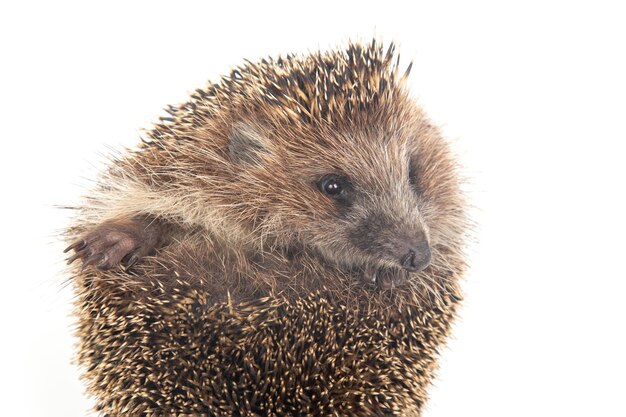Common European Hedgehog (Erinaceus europaeus) on White Background – Free Download
Common European Hedgehog: Erinaceus europaeus
The Common European Hedgehog, scientifically known as Erinaceus europaeus, is a fascinating creature found in gardens, woodlands, and rural areas across Europe. This delightful small mammal has unique features that make it a beloved character in many cultures. Its spiky exterior and charming face have captured the hearts of many.
Physical Characteristics
The Common European Hedgehog is easily recognizable thanks to its round body covered in sharp spines. Here are some key features of this adorable animal:
- Size: Generally, they grow to about 9 to 12 inches in length.
- Weight: They usually weigh between 4 to 9 pounds.
- Color: Their spines are often brown or grey, while their underbelly is soft and creamy.
Habitat and Behavior
This species prefers habitats that offer plenty of shelter and food sources. You can often find them in:
- Gardens: They love to rummage through gardens for insects and worms.
- Woodlands: Dense areas provide great shelter from predators.
- Fields: Open fields give them space to roam and forage.
The hedgehog is nocturnal, which means it is most active at night. During the day, it often curls up into a ball, using its spines for protection against threats.
Diet
Hedgehogs are primarily insectivores, but their diet can be quite varied. They enjoy a range of foods, including:
- Beetles
- Worms
- Slugs and snails
- Fruits and vegetables (in moderation)
Importance of Hedgehogs in Our Ecosystem
The Common European Hedgehog plays a vital role in the ecosystem by helping control insect populations. By munching on pests like slugs and beetles, they contribute to a balanced environment. They are also indicators of a healthy ecosystem because their presence signifies good habitat conditions.
Conservation Status
Unfortunately, the Common European Hedgehog faces threats due to habitat loss, road traffic, and climate change. Itâs important to create safe environments for them, such as:
- Encouraging wildlife-friendly gardens.
- Avoiding the use of pesticides that can harm them.
- Building small hedgehog homes in your backyard.
Final Thoughts
In conclusion, the Common European Hedgehog is an incredible little creature that brings joy to many. They are not only cute but also beneficial for our environment. By learning about their habits and helping them thrive, we can ensure that these delightful animals remain a part of our landscapes for generations to come.












